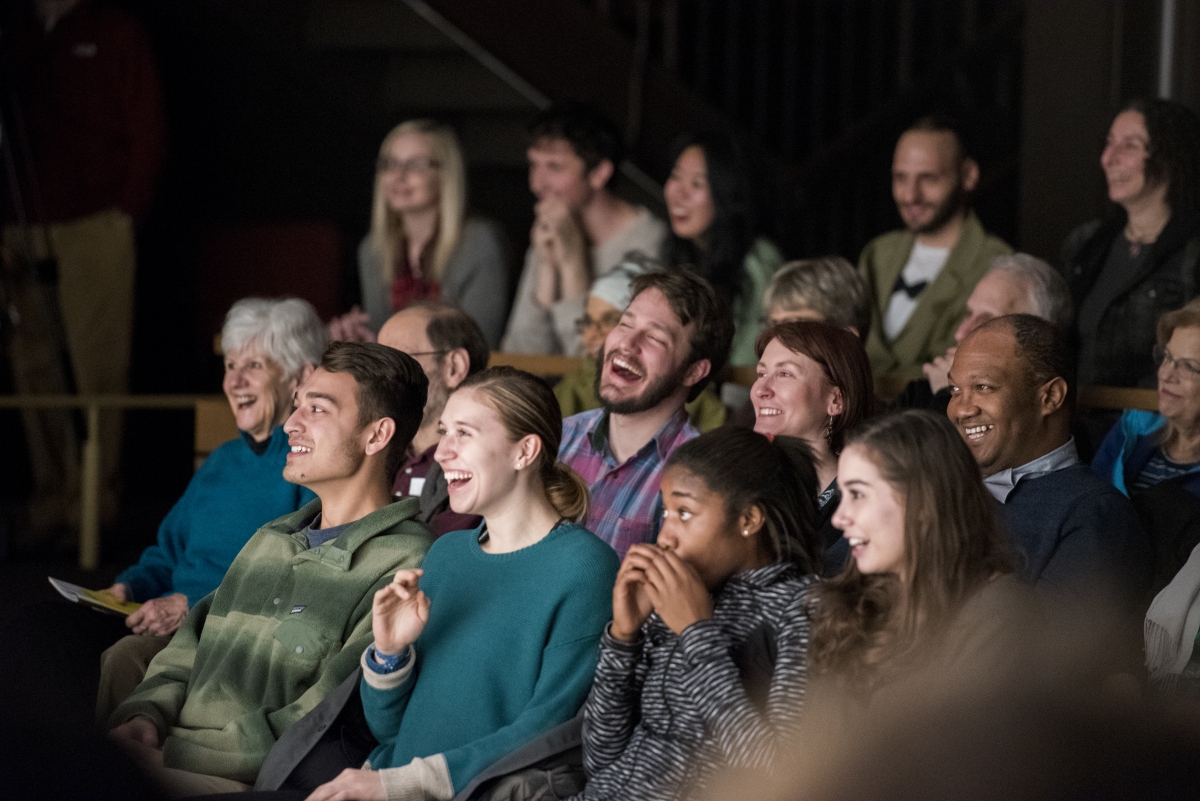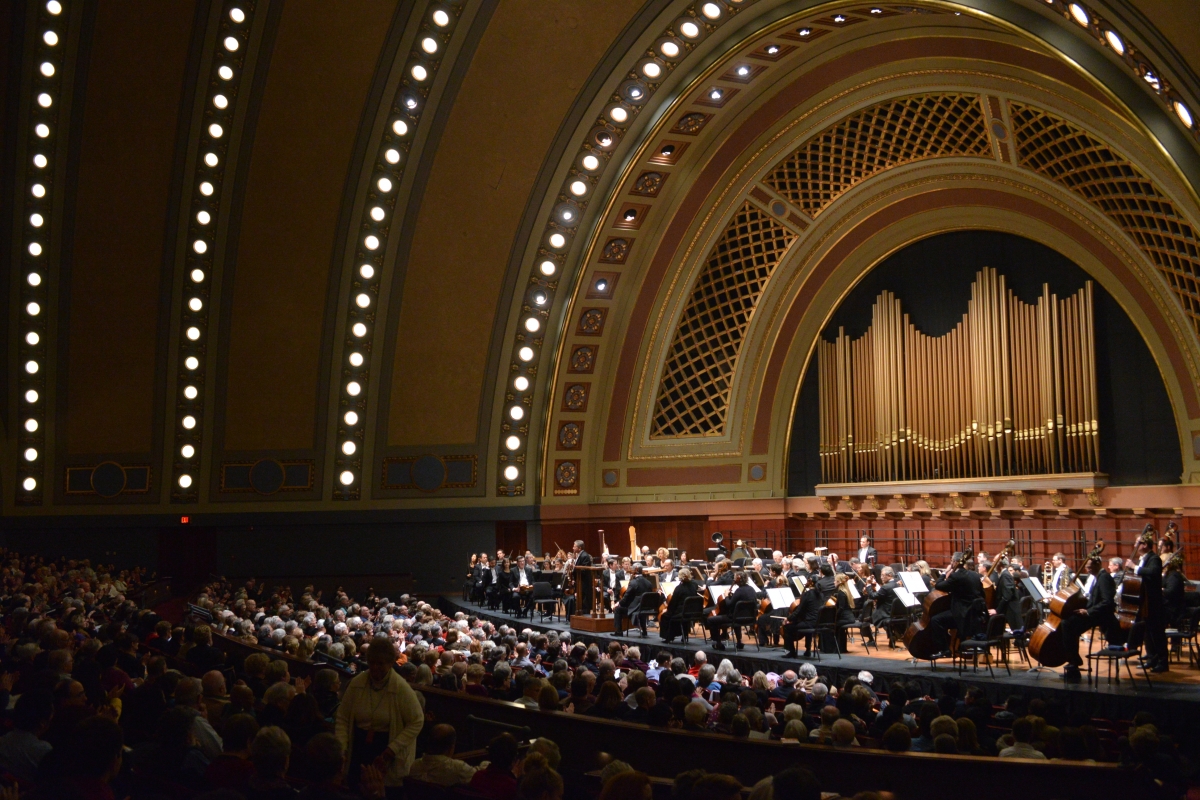“How” is Just as Important as “What”: Bringing Audiences Together Through Uncommon and Engaging Experiences
Posted by Aug 24, 2018

Matthew VanBesien
It’s that time once again. Many of us across the performing arts realm are hanging on to the last remnants of summer, while also turning our attention to (and girding our loins for!) the new season ahead. For the University Musical Society, this officially begins on Sept. 21, a couple of weeks after the University of Michigan commences its fall semester.
So, what are we thinking about at UMS? Well, for starters, we’re ramping up to UMS’s 140th season. While perhaps not as memorable a milestone as 50, 100, or even 125, the fact is that 140 years as one of the first major arts presenters in America is both something to celebrate and something to use as inspiration for the next chapter in our company’s history.
I’m beginning my second season at UMS after coming to Michigan from New York in July 2017. This new season feels much more like my own—I’ve internalized it much more simply by taking part in its planning—though I was also incredibly proud of last year and all our accomplishments.
The last thing I want to do is use this platform to regurgitate our season offerings—we all have a great wealth of interesting work we’re proud of for the coming year. Our season kicks off with a live presentation of 2001: A Space Odyssey, featuring Stanley Kubrick’s stunning film (celebrating its 50th anniversary in 2018) with the musical score performed live by our colleagues at the Detroit Symphony and New York’s Musica Sacra.
I was part of the team, along with then-Music Director Alan Gilbert, that brought this project for the first time to New York at the New York Philharmonic. We thought it would be special, but I remember how it really exceeded all our expectations in terms of the artistic experience, which allowed us the opportunity to view this audacious film on the big screen, hearing not only the more “famous” parts of the film score but also the exquisite music of György Ligeti in particular. The buzz and energy these performances created was palpable. It was starry without all the usual gala trappings—Sting and Natalie Portman both attended—and it was clear how this film pulls together a disparate but passionate group of enthusiasts. When Ligeti got his screen credit at the end, the crowd pretty much went crazy.
As we present this project now at UMS and the University of Michigan in the wonderful and atmospheric Hill Auditorium, truly one of America’s great concert halls, it feels even more special because of the collaborative nature of our presentation, the educational environment we’re creating around the performance, and the fact that we’ve been able to make this a free, community event to launch our season. We are working closely on this project with a great team at Michigan’s College of Engineering, whose dean was wildly enthusiastic about this collaboration as soon as he heard about it.
One of the things I value most about UMS and my new role here is the great care and attention we give to not just WHAT we present, but HOW we present it. This is an important lesson for all of us, each and every day, as we endeavor to grow the energy, focus, and evolution of our institutions. As the great Wynton Marsalis said to me recently, “You’ve already got a great series, one of the best in America. Now what are you going to do with it?”
His question—a call to action really—hit very close to home, and I’m proud to say we’re digging deep to answer that and many other fundamental questions about who we are and what we want to be in the future. Our tradition at UMS has been to always seek the optimal balance between presenting the new and audacious, acting as an incubator for new and experimental work, but also being a thoughtful and committed presenter of the traditional, which serves as a gateway for many people discovering the performing arts.
But equally important as the selection of artistry and work we present is ensuring that it has the maximum impact both on and off the stage.
So, while most people here on Sept. 21 will be focused on what will surely be a dazzling 2001 performance inside Hill Auditorium on stage, our team here at UMS will be equally focused on how people experience this great work throughout the performance event as well as what happens off the stage. That encompasses how easy it has been for them to attend and access this performance, feeling truly welcomed in our hall, and hoping that all who attend have a rich and holistic experience that might even change them.

For my part, I anticipate feeling equally proud about Michigan Engineering’s Tech Takeover outside of the venue, with demonstrations and engineering displays, as well as a raft of killer talks including everything from engineering panels to NASA experts; the chance to welcome our Detroit neighbors and colleagues to share their artistry on our stage; and, of course, seeing local students come to witness and experience a 50-year old masterpiece that still feels fresh and relevant today.
Maybe that’s the big takeaway from our season opener this year—truly great artistic and creative work always finds a way to capture people’s imagination, whether it’s a 50-year-old work, something newly created, or something from several centuries ago. It’s really our job as presenters—our responsibility and our privilege—not to merely think about “breathing new life” into existing works, but rather creating the best possible environment and moment for artists and the audiences. The rest will take care of itself.
And Sting and Natalie, if you’re reading this, feel free to call me directly for tickets this time.






